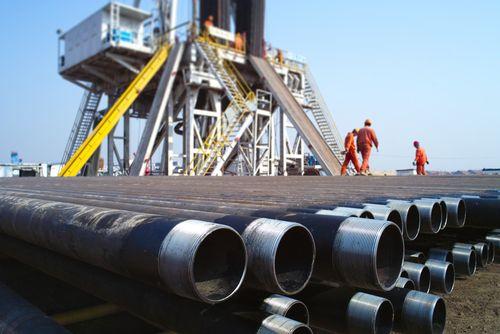
BEIJING, Mar. 13 (Xinhua) -- Chinese institutions are preparing for the launch of much-anticipated yuan-denominated crude oil futures, a move seen to give the country greater pricing power over commodities.
Trading of the crude oil futures contracts will start at 9 a.m. on March 26 at the Shanghai International Energy Exchange,or INE, according to a statement of the organization Monday.
The trading margins for the futures have been set at 7 percent of the contract value, the statement said.
The upward and downward trading limits will be 5 percent, with the trading limits on the first trading day set at 10 percent of the benchmark prices.
The Shanghai International Energy Exchange will release the benchmark prices one trading day before the launch of the futures.
"All institutions concerned should get ready for the launch of the crude oil futures, strengthen risk prevention, and ensure stable operation of the market," said Shanghai International Energy Exchange in the statement.
Futures companies are offering training to clients and helping companies better understand how the financial product can mitigate risks, Gu Jingtao, an analyst with Chinese investment bank BOCI, told the Economic Observer.
"The launch of the oil futures will greatly improve the risk management capability of small and medium-sized firms," Gu said.
Futures brokerages have been competing for clients while testing technical systems to ensure smooth trading, according to Jia Shuchang of Industrial Futures, the Economic Observer reported.
China Securities Regulatory Commission announced the launch of the crude oil futures in February.
Preparations are almost complete, and there have been several system tests ahead of the launch.
Analysts say Shanghai crude will be able to compete for the crude price benchmark in the Asia-Pacific region, hopefully becoming part of the 24-hour global trading system, together with Brent and WTI futures.
The Asia-Pacific region has surpassed America and Europe in crude consumption, but a benchmark with high recognition is still missing.
China is the world's second largest oil consumer after the United States. Demand is likely to soar in the future as the country is thirsty for energy to fuel its economic growth.
Gu said he expects sufficient demand for the crude futures contracts from both industrial and financial clients as they needed a tool to manage risk, and hedge against inflation.
Individual investors can also benefit from the launch as their interests are better protected in exchanges rather than through over-the-counter trading, according to Gu.
The yuan-based futures are also expected to help China's effort to promote the yuan as a global currency.
However, Gu said that there were still uncertainties over liquidity as well as concerns over contract settlements.
While foreign investors are allowed in the petro-yuan trade, Gu said there have been relatively few accounts opened by overseas clients, indicating concerns over market liquidity and regulatory uncertainties.
"It would be difficult to challenge the dollar's dominance in oil pricing in the short term," Gu said. "In the long term, however, multi-currency pricing will become a trend in the future."




 A single purchase
A single purchase









